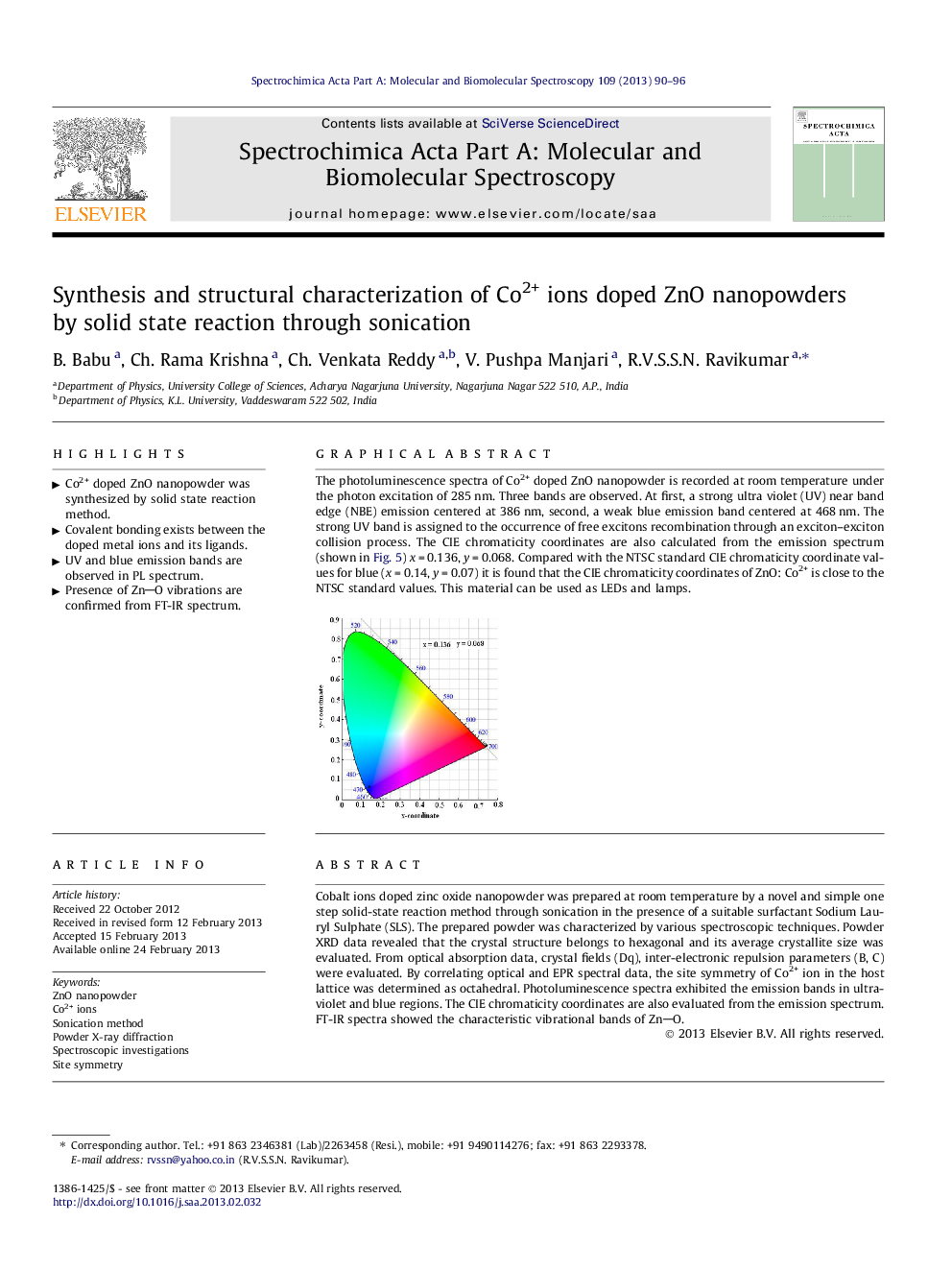| Article ID | Journal | Published Year | Pages | File Type |
|---|---|---|---|---|
| 1231525 | Spectrochimica Acta Part A: Molecular and Biomolecular Spectroscopy | 2013 | 7 Pages |
Cobalt ions doped zinc oxide nanopowder was prepared at room temperature by a novel and simple one step solid-state reaction method through sonication in the presence of a suitable surfactant Sodium Lauryl Sulphate (SLS). The prepared powder was characterized by various spectroscopic techniques. Powder XRD data revealed that the crystal structure belongs to hexagonal and its average crystallite size was evaluated. From optical absorption data, crystal fields (Dq), inter-electronic repulsion parameters (B, C) were evaluated. By correlating optical and EPR spectral data, the site symmetry of Co2+ ion in the host lattice was determined as octahedral. Photoluminescence spectra exhibited the emission bands in ultraviolet and blue regions. The CIE chromaticity coordinates are also evaluated from the emission spectrum. FT-IR spectra showed the characteristic vibrational bands of ZnO.
Graphical abstractThe photoluminescence spectra of Co2+ doped ZnO nanopowder is recorded at room temperature under the photon excitation of 285 nm. Three bands are observed. At first, a strong ultra violet (UV) near band edge (NBE) emission centered at 386 nm, second, a weak blue emission band centered at 468 nm. The strong UV band is assigned to the occurrence of free excitons recombination through an exciton–exciton collision process. The CIE chromaticity coordinates are also calculated from the emission spectrum (shown in Fig. 5) x = 0.136, y = 0.068. Compared with the NTSC standard CIE chromaticity coordinate values for blue (x = 0.14, y = 0.07) it is found that the CIE chromaticity coordinates of ZnO: Co2+ is close to the NTSC standard values. This material can be used as LEDs and lamps.Figure optionsDownload full-size imageDownload as PowerPoint slideHighlights► Co2+ doped ZnO nanopowder was synthesized by solid state reaction method. ► Covalent bonding exists between the doped metal ions and its ligands. ► UV and blue emission bands are observed in PL spectrum. ► Presence of ZnO vibrations are confirmed from FT-IR spectrum.
